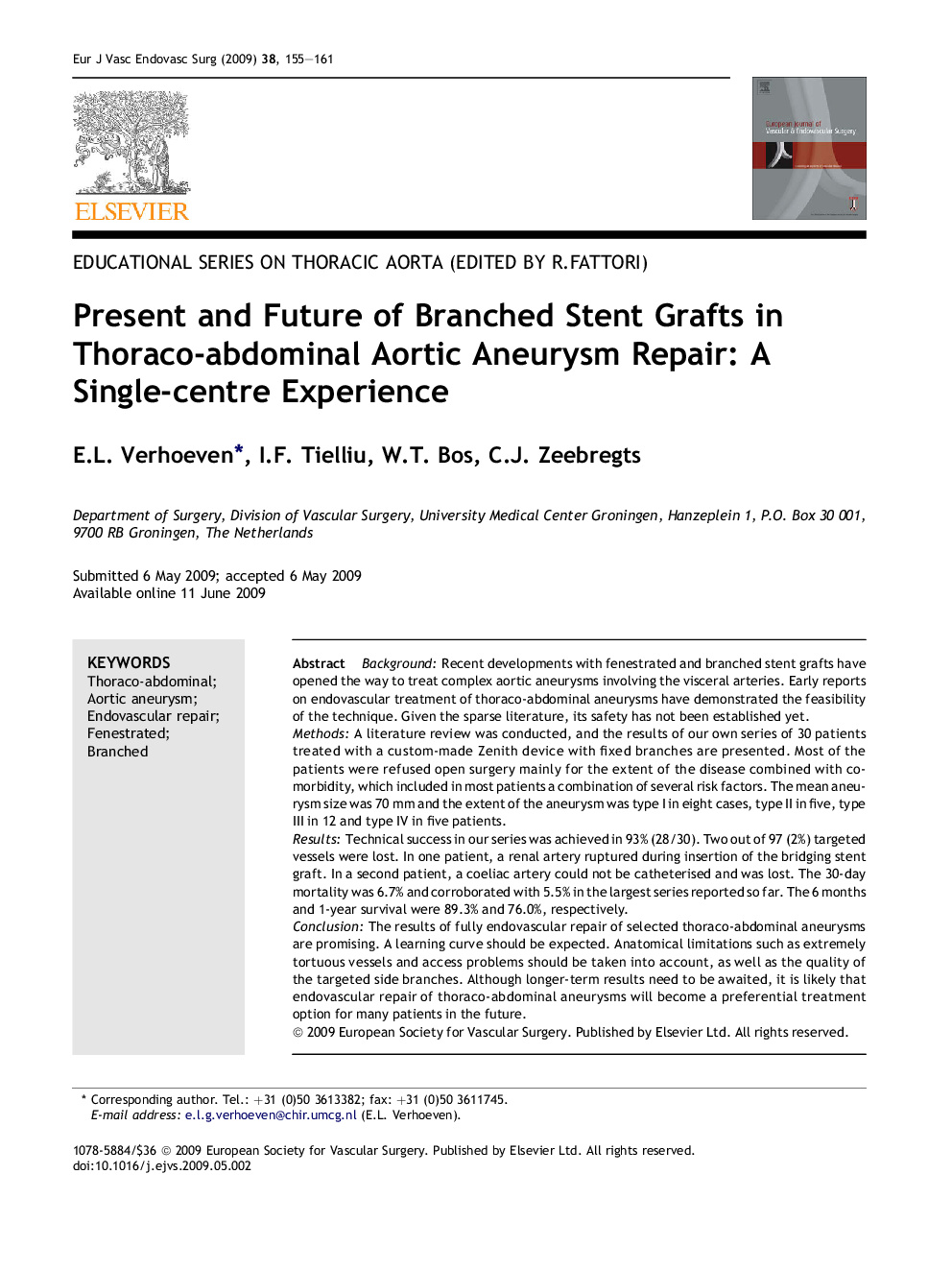| Article ID | Journal | Published Year | Pages | File Type |
|---|---|---|---|---|
| 2913478 | European Journal of Vascular and Endovascular Surgery | 2009 | 7 Pages |
BackgroundRecent developments with fenestrated and branched stent grafts have opened the way to treat complex aortic aneurysms involving the visceral arteries. Early reports on endovascular treatment of thoraco-abdominal aneurysms have demonstrated the feasibility of the technique. Given the sparse literature, its safety has not been established yet.MethodsA literature review was conducted, and the results of our own series of 30 patients treated with a custom-made Zenith device with fixed branches are presented. Most of the patients were refused open surgery mainly for the extent of the disease combined with co-morbidity, which included in most patients a combination of several risk factors. The mean aneurysm size was 70 mm and the extent of the aneurysm was type I in eight cases, type II in five, type III in 12 and type IV in five patients.ResultsTechnical success in our series was achieved in 93% (28/30). Two out of 97 (2%) targeted vessels were lost. In one patient, a renal artery ruptured during insertion of the bridging stent graft. In a second patient, a coeliac artery could not be catheterised and was lost. The 30-day mortality was 6.7% and corroborated with 5.5% in the largest series reported so far. The 6 months and 1-year survival were 89.3% and 76.0%, respectively.ConclusionThe results of fully endovascular repair of selected thoraco-abdominal aneurysms are promising. A learning curve should be expected. Anatomical limitations such as extremely tortuous vessels and access problems should be taken into account, as well as the quality of the targeted side branches. Although longer-term results need to be awaited, it is likely that endovascular repair of thoraco-abdominal aneurysms will become a preferential treatment option for many patients in the future.
